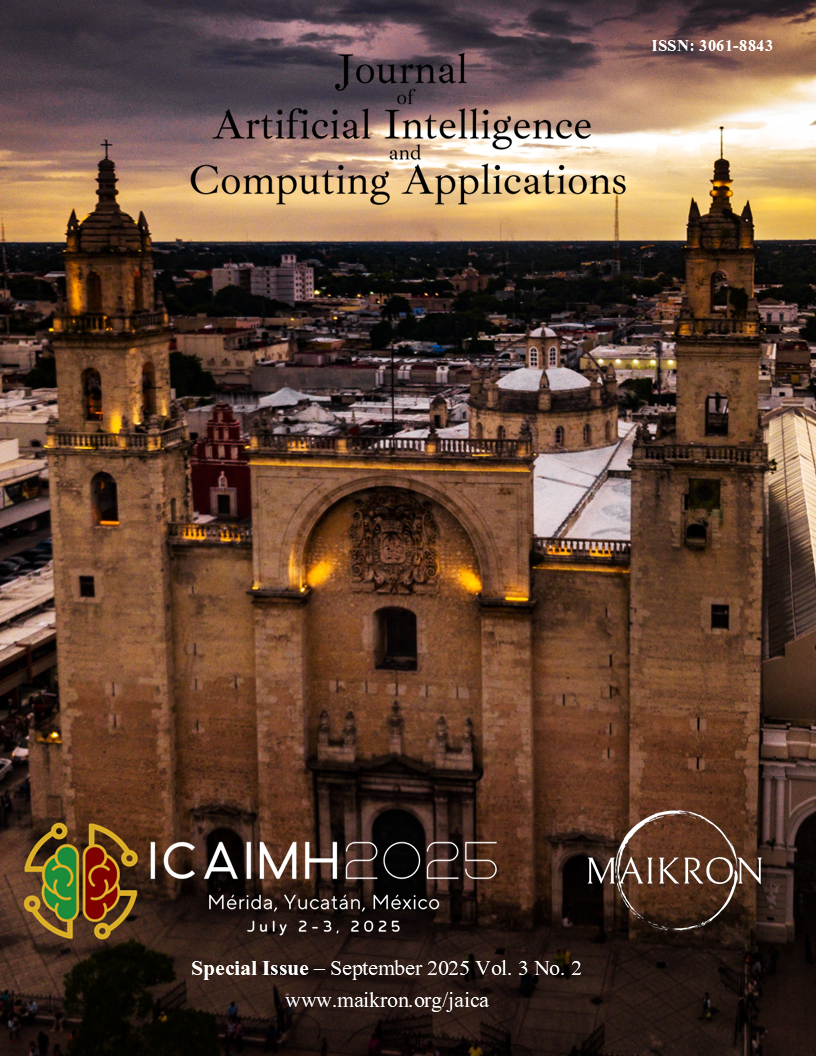Detection of people with social phobia using pupillary position classification algorithms
Main Article Content
Abstract
This study analyzes the visual attention of people with and without social phobia toward different images (photos of faces) depicting emotions such as normality, sadness, anger, and happiness. The analysis is divided into four main parts: The first part consists of identifying participants, both those with and without social phobia, using a psychometric instrument known as the BFNE-II. The second part focuses on the presentation of images composed of facial expressions, as well as the detection of the subjects' pupillary positions when observing these images. In the third part, the participants' pupillary positions are classified into characteristic points called fixations. Finally, in the fourth part of the study, these fixations are used as a measure to quantify the visual attention of people with and without social phobia, with the aim of identifying potential biases in both groups. Based on the analysis of visual attention to the different images, it was concluded that people with social phobia showed significantly greater visual attention to facial expressions of anger, compared to those without social phobia. On the other hand, non-phobic people tended to focus their attention primarily on images that depicted happy facial expressions.
Article Details

This work is licensed under a Creative Commons Attribution 4.0 International License.
References
American Psychiatric Association, Diagnostic and Statistical Manual of Mental Disorders: DSM-5-TR. Washington, DC: American Psychiatric Association Publishing, 2022. doi: 10.1176/appi.books.9780890425787 . [Online]. Available: https://www.psychiatry.org/psychiatrists/practice/dsm
K. Ressler, Anxiety Disorders. Oxford: Oxford University Press, Incorporated, 2015. [Online]. Available: http://ebookcentral.proquest.com/lib/anahuac-ebooks/detail.action?docID=2012685
A. Moukheiber, G. Rautureau, F. Perez-Diaz, R. Soussignan, S. Dubal, R. Jouvent, and A. Pelissolo, "Gaze avoidance in social phobia: Objective measure and correlates," Behaviour Research and Therapy, vol. 48, no. 2, pp. 147–151, 2010. doi: 10.1016/j.brat.2009.09.012 . [Online]. Available: https://pubmed.ncbi.nlm.nih.gov/19863948/
T. Bantin, S. Stevens, A. L. Gerlach et al., "What does the facial dot-probe task tell us about attentional processes in social anxiety? a systematic review," Journal of Behavior Therapy and Experimental Psychiatry, vol. 50, pp. 40–51, 2016. doi: 10.1016/j.jbtep.2015.04.009 .
C. A. Schofield, A. L. Johnson, A. W. Inhoff, and M. E. Coles, "Social anxiety and difficulty disengaging threat: Evidence from eye-tracking," Cognition and Emotion, vol. 26, no. 2, pp. 300–311, 2012. doi: 10.1080/02699931.2011.602050 . [Online]. Available: https://www.tandfonline.com/doi/abs/10.1080/02699931.2011.602050
N. K. Sahu, N. S. Harshit, R. Uikey, and H. R. Lone, "Beyond questionnaires: Video analysis for social anxiety detection," 2024. [Online]. Available: https://arxiv.org/abs/2501.05461
S. Martinez-Conde, S. L. Macknik, and D. H. Hubel, "The role of fixational eye movements in visual perception," Nature Reviews Neuroscience, vol. 5, no. 3, pp. 229–240, 2004. doi: 10.1038/nrn1348 .
D. Salvucci and J. Goldberg, "Identifying fixations and saccades in eye-tracking protocols," in Proceedings of the Eye Tracking Research and Applications Symposium, Jan 2000, pp. 71–78. doi: 10.1145/355017.355028 .
A. Lazarov, D. Basel, S. Dolan, D. G. Dillon, D. A. Pizzagalli, and F. R. Schneier, "Increased attention allocation to socially threatening faces in social anxiety disorder: A replication study," Journal of Affective Disorders, vol. 290, pp. 169–177, 2021. doi: 10.1016/j.jad.2021.04.063 . [Online]. Available: https://www.sciencedirect.com/science/article/pii/S0165032721003955
L. R. Lidle and J. Schmitz, "Assessing visual avoidance of faces during real-life social stress in children with social anxiety disorder: A mobile eye-tracking study," Child Psychiatry & Human Development, vol. 55, no. 1, pp. 24–35, Feb 2024. doi: 10.1007/s10578-022-01383-y . [Online]. Available: https://doi.org/10.1007/s10578-022-01383-y
R. Andersson, L. Larsson, K. Holmqvist et al., "One algorithm to rule them all? an evaluation and discussion of ten eye movement event-detection algorithms," Behavior Research Methods, vol. 49, no. 2, pp. 616–637, Apr 2017. doi: 10.3758/s13428-016-0738-9 . [Online]. Available: https://doi.org/10.3758/s13428-016-0738-9
V. Rangel-Fajardo, "Análisis de la fobia social mediante la clasificación de las posiciones pupilares ante estímulos visuales," Tesis de Maestría, Centro de Investigación en Computación, Ciudad de México, México, Diciembre 2018.
A. T. Duchowski, Eye Tracking Methodology: Theory and Practice, 3rd ed. London: Springer, 2007.
S. A. Johansen, J. San Agustin, H. Skovsgaard, J. P. Hansen, and M. Tall, "Low cost vs. high-end eye tracking for usability testing," in CHI'11 Extended Abstracts on Human Factors in Computing Systems. ACM, 2011, pp. 1177–1182. doi: 10.1145/1979742.1979744 .
P. Ekman, "An argument for basic emotions," Cognition & Emotion, vol. 6, no. 3-4, pp. 169–200, 1992. doi: 10.1080/02699939208411068 .
P. Ekman, "Basic emotions," Handbook of Cognition and Emotion, pp. 45–60, 1999. doi: 10.1002/0470013494.ch3 .
J. F. Cohn, T. Kanade, and Y. Tian, "Au-coded facial expression database," Digital Repository, 2000, obtenido de http://www.pitt.edu/~emotion/ck-spread.htm.
P. Ekman, "Facial action coding system (facs)," A Human Face, 2002.
M. A. Bravo, F. González Betanzos, Castillo Navarro, and F. Padrós Blázquez, "Escala de miedo a la evaluación negativa versión breve (bfne): propiedades psicométricas en muestras clínicas y de universitarios en méxico," Acta Colombiana de Psicología, vol. 18, no. 1, pp. 69–77, 2015. doi: 10.14718/ACP.2015.18.1.4 .
R. Engbert and R. Kliegl, "Microsaccades uncover the orientation of covert attention," Vision Research, vol. 43, no. 9, pp. 1035–1045, 2003. doi: 10.1016/S0042-6989(03)00084-1 .

